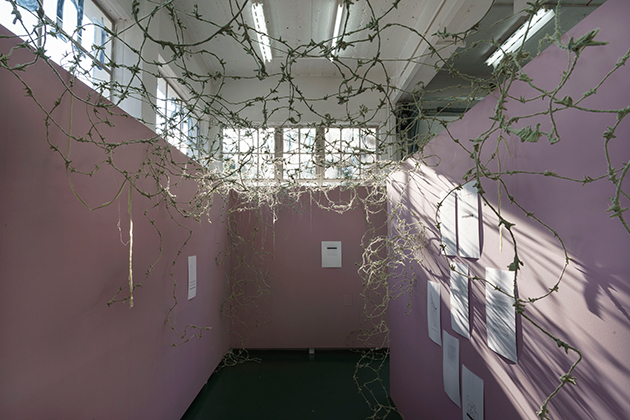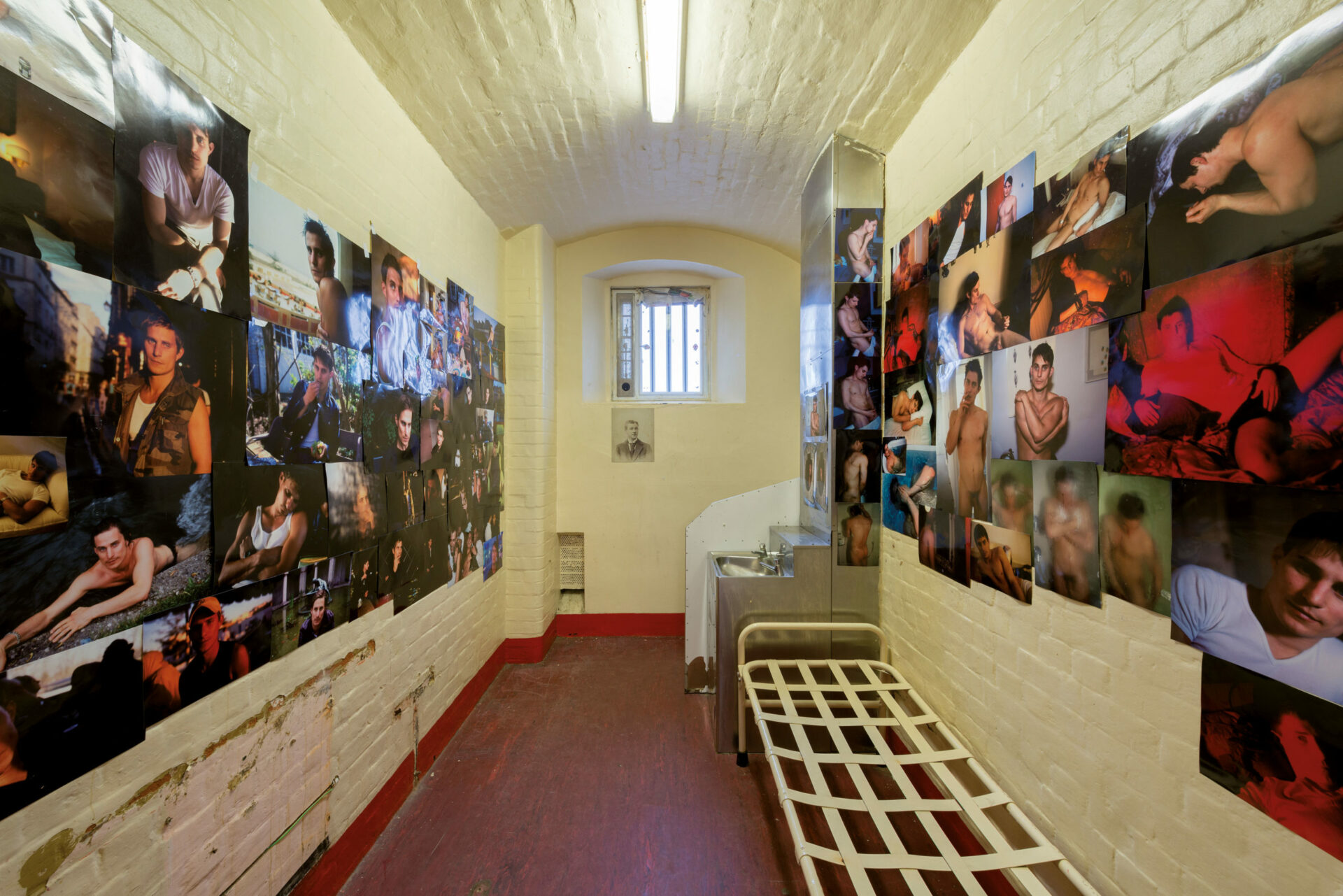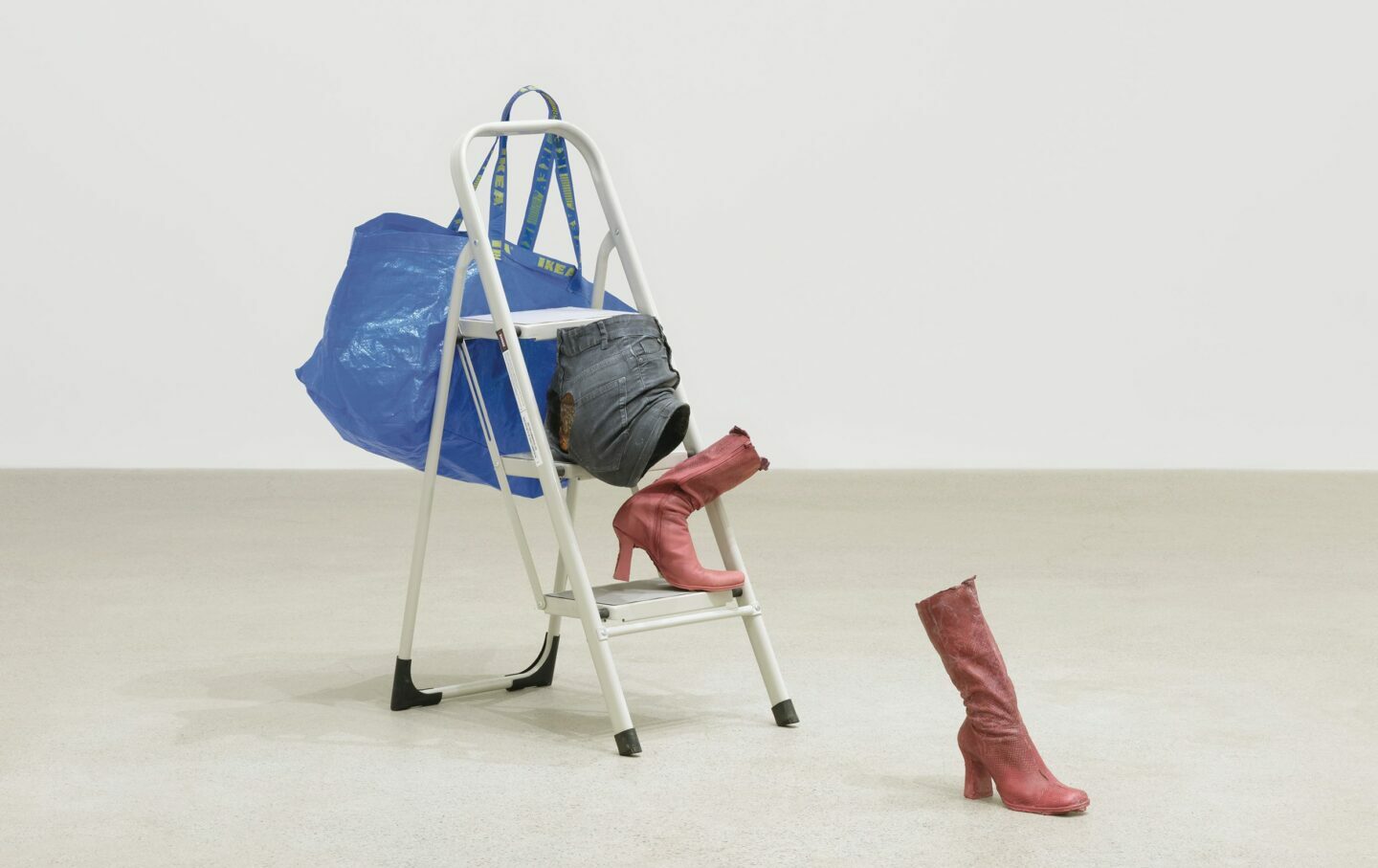
Photo: Daniel Brooke, courtesy of the artist, commissioned by The Showroom and The Otolith Collective
October 3, 2018–January 26, 2019
[En anglais] “No chance, no destiny, no fate, can circumvent, nor alter, nor control, the firm resolve of a determined soul—will alone is great. Some got the Parades, but I the Promised Land.” At The Showroom, we find this quotation emblazoned on a bright yellow banner, embedded in one of five colourful verticals of text—red, purple, red, yellow, blue—that reproduce a 1949 article in The Chicago Defender, “A Garvey Comes Home to Africa,” by Hillal H. Nadji. The article lauds Garvey, who has travelled extensively across the world, and now returns from a first visit to West Africa: Sierra Leone, Liberia, Nigeria, Gold Coast, French West Africa, British and French Cameroons, Spanish Guinea, and the Belgian Congo. The names of many of these countries are now unrecognizable, having discarded their colonial nomenclature—a testament to the Pan-African movement in which Garvey was a pivotal figure. And yet the name of Garvey, here, is also in some ways today unrecognizable: Mrs. Garvey. Mrs. Amy Ashton Garvey (1897–1969), the first wife of the much better renowned Marcus; and to whom one of the three sections of Women on Aeroplanes is dedicated, via the extensive archival work of artist Emma Wolukau-Wanambwa, who has herself travelled the world during the past year to research the life and work of Garvey.
Wolukau-Wanambwa’s project is broad and ambitious, as well as frustrating and frustrated. She wants to find out as much as possible about this awesome woman—social, political and cultural activist, world traveller, and more. But at many turns, she finds history and its documents to be partial, incomplete, and far from impartial, favouring Mr. and not Mrs. Garvey: Ashton Garvey’s invisibility, or her position as attaché, only existing in relation to her husband is writ large. This, in spite of numerous and well-documented contributions to the Pan-African movement. At The Showroom, Wolukau-Wanambwa’s research—meticulously labelled, numbered, colour-coded—is presented in an archival installation entitled Carrying Yours and Standing Between You. Five wooden desks are assembled in the main space: reading stations with binders of materials that can be consulted and leafed through at leisure.
Créez-vous un compte gratuit ou connectez-vous pour lire la rubrique complète !
Mon Compte


